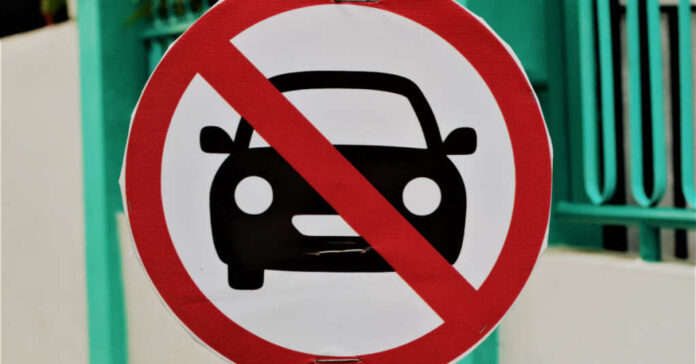
Tempe, Arizona, is home to a real estate development proudly proclaiming to be “the first car-free neighborhood built from scratch in the U.S.” Culdesac Tempe, an apartment complex first started in 2019, is set to open its first building soon.
The complex features apartments starting at $1340 per month for a studio and ranging up to $2990 for a three-bedroom. It also features bicycle parking, scooters, free Metro rides, and discounted Lyft and car-sharing rides through Envoy, featuring an all-electric fleet.
The one thing you won’t find at Culdesac Tempe is parking.
The builders of the “forward-thinking” living concept ban cars, not only in the development but in surrounding areas. The Culdesac Tempe excitedly boasts, “Removing parking creates ample open space for a large dog park and pool.”
Don’t let mobility worries stop you from signing on the dotted line, however: “You’re just 5 mins away from a fresh cup of coffee at Firecreek Coffee Co, all your essentials at Street Corner Urban Market, a quick tune-up at Archer’s Bikes, and a cozy dinner at Cocina Chiwas.”
The aim of the neighborhood is to have all amenities within a short walk or ride in the 100-degree Arizona desert, and if that doesn’t sound fun, you’re obviously part of the climate change problem.
Residents, already spending a mortgage payment on an apartment, will need to consider if the trade-off is worth an expensive and inconvenient commute to jobs located outside of the complex as well as limited, costly car rentals to visit family and friends outside of the Culdesac Tempe bubble.
The Culdesac Tempe is the first-of-its-kind neighborhood designed to be a carless society, but it’s far from the first to cash in on the concept of banning or limiting cars. In the United States, many tourist islands rely on scooters and golf carts for visitors to navigate the scenery, but the visits always end with tourists getting back into their cars and driving home, free to drive again the next day.
The idea of banning or limiting cars is not exclusive to America, however, and examples are found across the globe. Pontevedra and Barcelona, Spain, Vauban, and Freiburg, Germany, Curitiba, Brazil, and Oslo, Norway have largely ditched private vehicles in their cities. Some cities find that their alternative modes of transportation, like the famous canals in Venice, Italy, enhance their popularity as tourist sites.
New York City and Washington D.C. are congested and compact, making it entirely possible and even desirable for residents to navigate without a vehicle. Many of these urban dwellers, however, do own vehicles that they can access and drive out of the city whenever they need to. Both cities feature wide varieties of restaurants and shopping experiences that make the need for cars obsolete.
This is unlike Culdesac Tempe, which seemingly currently only offers one grocery store, one coffee shop, and one restaurant. While these businesses will probably expand as more buildings are opened, this is a win-win for the limited shops and stores and a lose-lose for the complex’s captive audience.
Proponents of carless cities claim that residents will save money on car upkeep costs while seeming to ignore the fact that rideshare services are more costly. Climate change activists applaud car-free cities for lowering their carbon footprints, and experts believe that a society that bikes, jogs, and runs to a destination will be a healthier one. While all may be true, the trade-off may not be worth it.
As this concept catches on, the costs of building these cities and maintaining them will be staggering. Implementing car restrictions or creating car-free zones often requires significant investment in alternative transportation infrastructure, such as improved public transportation systems, bike lanes, and pedestrian-friendly infrastructure. It will take strategic planning to create a carless city that provides easy access for emergency vehicles, or delivery services such as Amazon and FedEx.
The cities may also face mobility issues for certain populations. People with mobility limitations or disabilities may find it challenging to navigate a car-free city, especially if public transportation or alternative modes of transport are not adequately accessible or available. The elderly and those with heavy luggage or goods to transport may also face difficulties. This population is generally the least able to safely navigate a metro-focused transportation system and the least able to afford ridesharing services like Lyft or Uber.
Still, those who are looking for a quieter and more peaceful experience may enjoy living in these cities.
They’ll have to; they won’t be able to leave.














